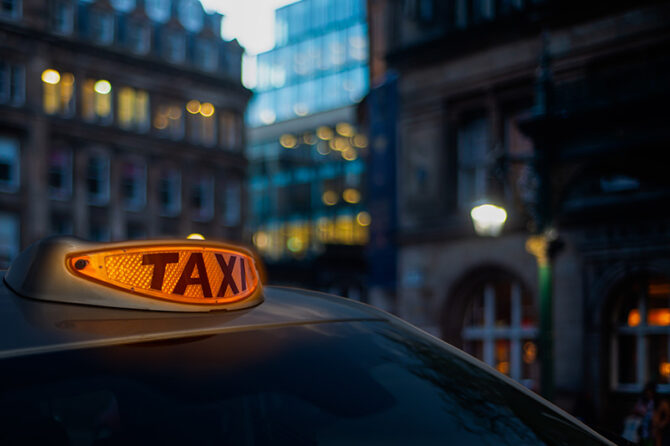
I have a desire to get MRI studies of the brains of Dr. Vijayendra, Dr. Jain, or Dr. Janaki to assess the size of their hippocampi! Eleanor Maguire, a neuroscientist at University College London, published a fascinating study, “Navigation-related structural change in the hippocampi of taxi drivers,” in 2000. The London city road system is complicated enough to confuse even a GPS. So, the best advice for new visitors is to avoid renting a car and instead hire the city’s ubiquitous cabbies. They are great at getting you anywhere in the city in the most efficient way possible.
Not just anyone can be a London cabbie. The licensing examination to become a taxi driver in London is the most challenging test globally. They have to go through a series of examinations where the knowledge of a prospective driver is thoroughly tested. Primarily, they are expected to know the area within a six-mile radius of Charing Cross, which contains approximately twenty-five thousand streets! According to a 2014 story in The New York Times Magazine, one prospective cabbie was asked to locate a statue of two mice with a piece of cheese. The figurine was just one foot tall on the façade of a building!
Licensing tests for London cabbies consist of a series of “runs” between two points in the city. The cabbie is expected to know the precise location of each point and then describe the best route between them, turn by turn. Cabbies earn numerical scores for each run based on their accuracy. As they accumulate points, the tests become more complex. As a result, the majority of prospective drivers drop out. But those who succeed in earning their licenses will become better than Google Maps!
Maguire performed an MRI study of the brains of London taxi drivers and compared them with the brains of other males of similar ages who were not taxi drivers and with bus drivers. She found that the posterior hippocampus was larger in the taxi drivers than in non-taxi drivers. Furthermore, the more driving experience in London, the larger the posterior hippocampi were. However, London bus drivers did not show larger posterior hippocampi like taxi drivers. The main difference between them was that bus drivers repeated the same routes and didn’t have to find out the best way to get from one location to another. It was clear from the study that the difference in the size of the hippocampi was explicitly related to the navigational skills required by the job and not to driving itself.
Maguire’s study provided substantial evidence that intense training results in the growth of the human brain. The enhanced navigational abilities of Licensed London cabbies were due to enlarged posterior hippocampi. These expanded hippocampi are like the neural equivalent of a bodybuilder’s massively developed biceps and deltoids. They work like our personal GPS, engaging in spatial navigation and remembering locations or things in space.
So what do Dr. Jain, Dr. Janaki, or Dr. Vijayendra have to do with London cabbies? Human anatomy is much more complicated than London streets and requires far superior knowledge than that of London cabbies. When operating on a live patient, we have to navigate through a maze of intricate structures and locate landmarks. The House Temporal Bone Dissection Manual states, “Temporal bone surgery is going from one landmark to another.” And this statement applies to all surgeries. One primary trait I have noticed in these extraordinary surgeons is their extensive knowledge of anatomy. Besides, these modern-day Feynmans are always on their toes to demonstrate and teach anatomy! I am sure they have huge hippocampi!
To be a successful surgeon, one needs a solid foundation in human anatomy. In an article titled “Should a Highly Skilled Surgeon be an Advanced Anatomist First? – A ViewPoint,” Rajani Singh et al. stated, “surgery is the art/science of treating diseases by cutting/repairing/removing, and/or replacing the defective/infected part/organ with minimum injury to other surrounding structures.” My observation is that students with better anatomical knowledge become excellent surgeons. And, unfortunately, most of the iatrogenic complications I have seen, either in my own cases or in those of other surgeons, are due to poor anatomical knowledge.
How to master anatomy and become better surgeons? First, we have to train better than London cabbies. Prospective cabbies, known as “Knowledge boys or girls,” drive for years together to familiarize themselves with streets and signs. Training starts with mastering a list of 320 runs in the training manual. Then, they personally travel through these routes multiple times, noting the minutest landmarks. We surgeons, responsible for the lives of our patients, have to make even more runs, either in the form of cadaver dissection courses or simulations, noting anatomy and landmarks. For a surgeon, learning anatomy never ends. Every time we revise our anatomical knowledge, we learn something new.
We are making a humble attempt to present our anatomical perspective of the neck through the “Radiology of Neck” series of webinars. Interested colleagues can write to me for registration.

We had a great learning experience with our first episode of the “Weekend with a Maestro” program. Dr. K.R Meghanath, a senior consultant and M.D. of MAA ENT Hospitals, Hyderabad, shared his disruptive thoughts, techniques, and innovations. We are highly indebted for his unconditional teaching. Our next episode will be on Sunday evening (9th Jan 2022, from 6.00 to 8.00 pm), as many of us are going to Ranchi for AOICON 2022. The topic is “Endoscopic Excision of Meningoencephalocele with Anterior Skull Base Reconstruction.” Registration is free but mandatory. Here is the link for registration. After registering, you will receive a confirmation email containing information about joining the meeting.
You are invited to a Zoom meeting – Weekend with a Maestro! When: 9th Jan 2022, 06:00 – 08:00 PM – Indian Time
With best regards,
Prof. Dr. Prahlada N.B.
4 January 2023
Chitradurga.

















Leave a reply